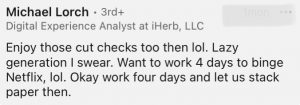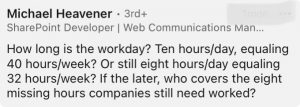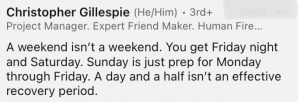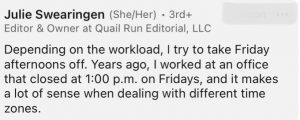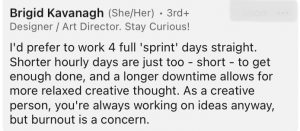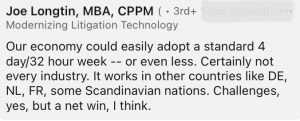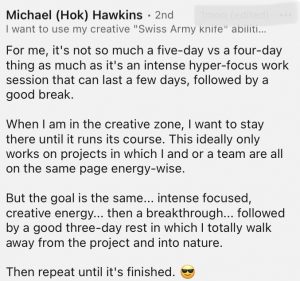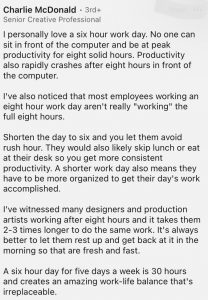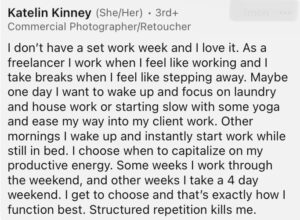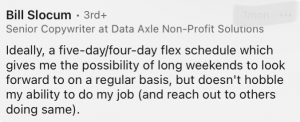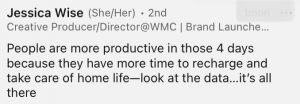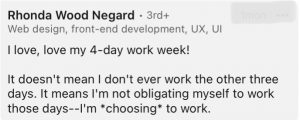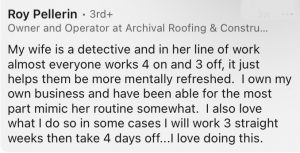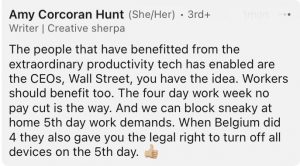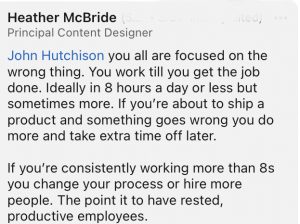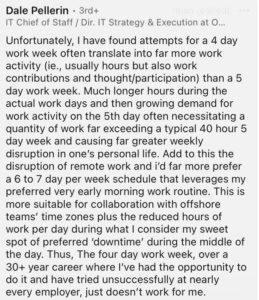Layoffs are rising and making major headlines—especially in Big Tech, with Spotify the latest to announce a significant slash to its workforce. So, what does this mean for workers across the country?
Some industries are hiring like it’s 2021 (we’re looking at you, agencies), while others are clearly in a downturn, like Meta. While some economists smell the wafting aroma of a possible recession, others are not so sure. Are we up—or are we down?
Wherever we are, one thing is clear—some industries are in deep flux, necessitating layoffs. And as we know, there are good and bad ways to handle a crisis. When people’s livelihoods are on the line, making major missteps is not just in poor taste, it can be a powerful exercise in negative branding. People talk, and a bad story has long legs. Just look at the beating that Twitter and Google are taking in the media.
Creative Circle surveyed 170 industry influencers to understand how rocky the layoff turbulence really is and how companies can better navigate these sometimes-rough waters. A whopping 88% of our members surveyed said that how a company publicly handles layoffs would affect their willingness to work for that company in the future.
So, when put into a situation where layoffs need to happen, how a company navigates the process can be a PR nightmare or halo for a company that handles things with mindfulness and compassion (here’s looking at you, Airbnb). Let’s look at some significant mistakes companies can make that make hard times even worse.
LACK OF TRANSPARENCY
“Companies aren’t transparent enough when it comes to layoffs. In my experience, they haven’t been honest about why layoffs are needed, how many people will be impacted, why certain people were chosen, etc.”
Industry influencer, Creative Circle survey
Keeping layoffs a secret until the cat is out of the bag does not serve anyone. Tell your employees what’s going on and be accountable as an organization. Plus, trying to hide the situation gives space for the dreaded rumor mill to churn, likely leading to a bunch of misinformation being spread. Add the potential leaks to the media—and things can go from bad to worse.
You can get out in front of that with strategic communication that allows people to prepare for the worst while minimizing the amount of gossip that may circulate.
Transparency and accountability also help the reputation of an organization. Being honest about the reasoning behind the decision and sharing if any other options were explored, like cutting executive pay, hiring freezes, and furloughing instead of laying off, can help a more positive view of the company after the fact.
ABRUPTNESS AND LACK OF WARNING
“Laying someone off and telling them they won’t be working the next day is a huge mistake because oftentimes, when word gets out, it will prevent others from wanting to work for that specific company in the future.”
“I had a company block me from my computer before I was able to get any of my files for my portfolio or any personal files, and I was never able to get them.”
Industry influencers, Creative Circle survey
Getting laid off out of the blue without time to prepare is a severe hardship for most employees, but it also hurts the company. Abrupt layoffs rob the organization of the ability to navigate that transition gracefully. They lose the opportunity to have the person leaving brief other team members on open projects. Giving employees notice allows them to gameplan next steps and transition their work to other team members.
Immediately locking people out of all systems and escorting them from the building with security villainizes former employees and ignores what might be years of loyal service to the company. When you treat people like they’re your enemy—they’ll see you as their enemy and act accordingly.
DEHUMANIZING THE PROCESS AND EMPLOYEES
“Everyone deserves to be treated like a person, not just a number on a spreadsheet. Taking a callous and impersonal approach to layoffs makes the situation more complicated. When someone has dedicated time and effort to supporting an organization, being laid off can feel like a betrayal, especially when all the work they’d done up to that point is ignored or disregarded.”
There is, however, a way to conduct layoffs with dignity. Show appreciation for the person’s work and thank them for their contribution to the company’s past success. Validate their contributions to your organization. The news is hard to hear no matter what—but softening the blow with empathy and acknowledgment of a layoff’s impact can go a long way.
STRUCTURAL MISTAKES
“In cutting the staff so severely, it puts a toll on those left as they have to do more to pick up the slack. The company saves money but burns out the remaining staff who have to work more to keep the company running.”
“Emotions aside, how do they actually foresee the same work getting done with less bodies without work/life balance taking a hit?”
Industry influencers, Creative Circle survey
It’s critical to be strategic when deciding which positions to eliminate—and there’s more to consider than just the bottom line. Will all the work still get done? By whom? Often, companies that rely solely on a numbers game will be left with an organization full of inexpensive juniors and expensive management, with no mid-level employees, which can really decrease workplace functionality.
Leadership needs to create and address a strategic plan post-layoff—and communicate that clearly to the people whose jobs and workload will be most impacted. Beware the old Latin adage; the cure is worse than the disease. If employees who remain are overloaded, burnout will ensue. And burnout is cited as one of the top three reasons Millenials and Gen Zers would leave their jobs, according to a Deloitte survey.
Without addressing these long-term needs, a round of layoffs meant to save a company may instead hasten its sinking.
LACK OF SUPPORT FOR LAID-OFF EMPLOYEES
“I think it’s important to continue to treat employees with respect and dignity and offer fair severance to anybody who is being let go of.”
Industry influencer, Creative Circle survey
Leaving former employees out high and dry tells people a lot about the ethics of a company. A company failing to provide adequate (or any!) severance packages to laid-off employees is considered a massive misstep by most of those surveyed.
Money is not the only way to support people who have been laid off—offering resources like continued health benefits, connections to recruiters, and other career transition services can be immensely helpful. These moves signal that a company cares for its employees—even those it must let go—and is not solely focused on the bottom line.
______________________________________
Finding What’s Next
Nearly half of those surveyed anticipate a recession within the next six months, and 79% predict one within the year. With possible layoffs looming, folks are preparing for the worst and looking at all options.
When asked what their highest priorities were when looking for a new job, the most common responses people gave were:
- Ability to work remotely
- Better pay
- Flexible schedule
- Work that is fulfilling
People are searching for stability; those surveyed are mainly seeking full-time employment or long-term, full-time contract work.
Over 75% of respondents said that contract work led to less burnout than working on projects as a full-time employee. The most common explanations given for this were:
- Not needing to worry about internal politics
- Having more control over their time
- Feeling more comfortable drawing work/life boundaries
As companies wait to see how the winds are blowing, they should consider minimizing harm and public backlash while crafting a sustainable plan to maintain productivity during these topsy-turvy times. The message is clear: handle with care.
About the author.
An award-winning creator and digital health, wellness, and lifestyle content strategist—Karina writes, produces, and edits compelling content across multiple platforms—including articles, video, interactive tools, and documentary film. Her work has been featured on MSN Lifestyle, Apartment Therapy, Goop, Psycom, Yahoo News, Pregnancy & Newborn, Eat This Not That, thirdAGE, and Remedy Health Media digital properties and has spanned insight pieces on psychedelic toad medicine to forecasting the future of work to why sustainability needs to become more sustainable.



